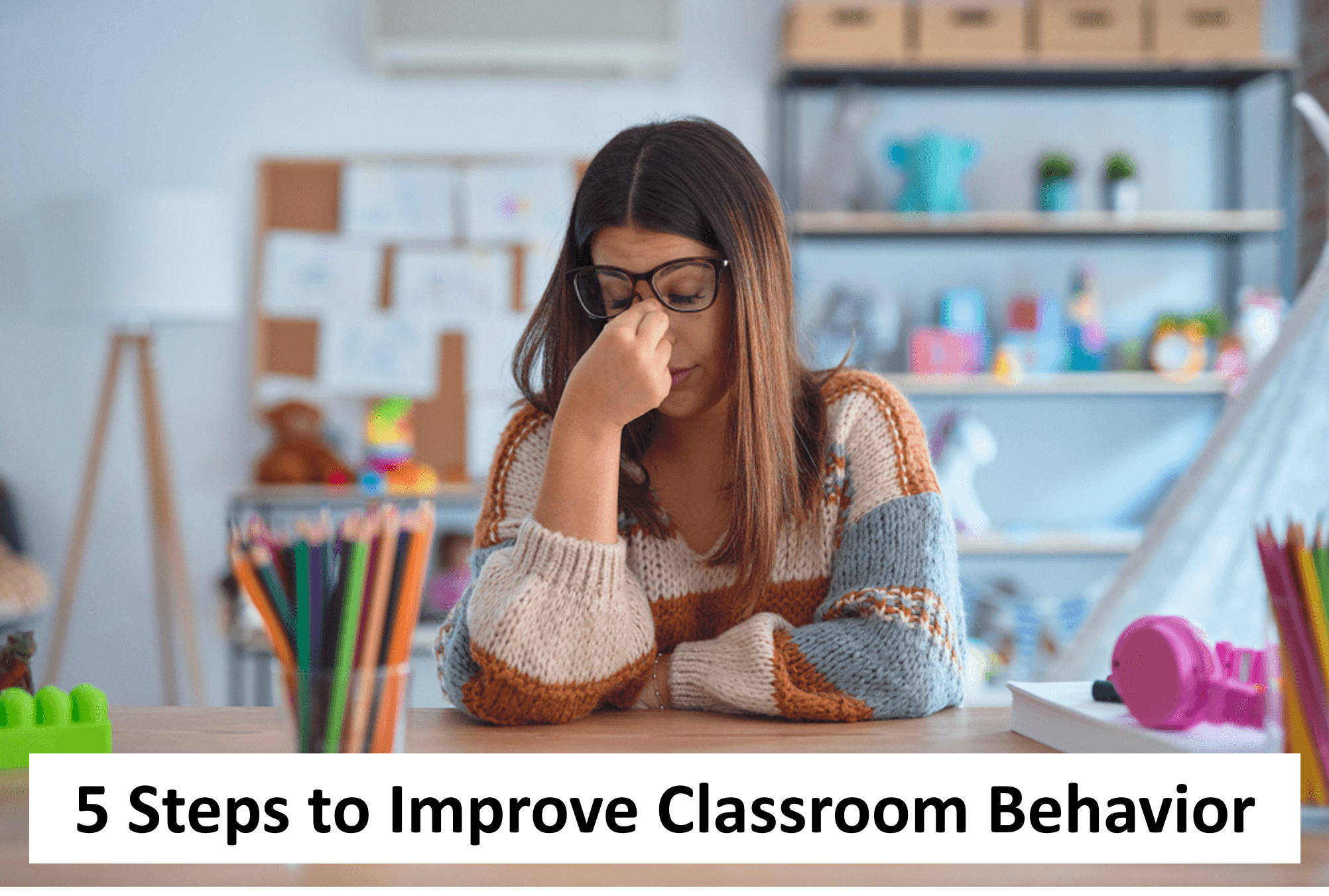
01 May 5 Steps to Improving Classroom Behavior
Starting Point for Improving Classroom Behavior
Inappropriate classroom behavior is a problem that many students, administrators, and teachers are sure to face at some point. Most educators would agree that the best way to avoid inappropriate behaviors would be to start each year (or experience) with the positive behaviors they want for their classrooms. You might be thinking, “That sounds great, but I'm dealing with inappropriate classroom behaviors right now, so how does this help?” Don't worry – we completely understand and we'll be sharing 5 steps you can use immediately to start improving those behaviors, but we wanted to stress this point as the foundation for the future.
Step 1: Create a List of Positive Classroom Behavior
The first step in proactively improving classroom behavior is to identify the behaviors you'd like in your classroom. This sounds pretty simple right? Unfortunately, many educators talk about things they “don't want” or behaviors they want to stop. Our goal is to establish positive behaviors and make the classroom a positive place for teachers and students, so it makes sense to focus on the positive behaviors we want to foster. You may already have a list of positive behaviors or you can click here to download a list of positive classroom behavior skills. We suggest choosing 5 behaviors or skills to focus on initially and then adjusting as the behaviors improve.
Step 2: Develop or Find Rubrics for the Positive Classroom Behavior
The second step involves finding a rubric for each of the 5 behaviors or skills you're looking to improve. When looking to improve any behavior, it is important to establish a baseline (or present level) for each specific skill you plan to work. By doing this, you'll be able to clearly measure progress and improvement in the classroom behavior. Also, it is important that we clearly establish a “Target Goal” for mastery of each behavior or skill.
Step 3: Clearly Communicate Expectations for Positive Classroom Behavior
The third step is one of the most important in the process because students needs to know what our expectations and goals are along with why they are important. Of course, how teachers communicate these expectations and rubrics will be determined by the age and comprehension level of their students. Remember, the goal in this step is to enroll the students in creating the positive classroom environment we're looking to create.
Step 4: Teach and Reinforce Necessary Skills for Positive Classroom Behavior
The fourth step involves teaching the necessary skills that will produce the desired positive behaviors. As you might expect, this requires different experiences that account for different learning styles, strengths, and needs of your students. Examples of ways to teach these skills can include activities like role-playing, modeling, art/creative activities, and discussions (informal/formal).
Step 5: Monitor Progress of Positive Classroom Behavior
The fifth step involves monitoring your classroom's progress by periodically rating the details you are teaching in the rubrics. This is a critical step in the process because it provides important feedback on progress towards the “Target Goal” or informs the teacher he/she may need to adjust the curriculum/activities to stimulate improvement on the goal. Ultimately, we expect the classroom behavior to improve to the “Target Goal” at which time the teacher could select a new behavior(s) to begin focusing on.
Improving Classroom Behavior is Worth it!
Research has proven that students who learn in a setting with positive classroom behavior are more likely to excel academically and will also enjoy the education experience. As we know, our goal as educators is to guide students to become life-long learners, which is much more likely with positive educational experiences. If you're interested in learning more about some additional resources to help improve classroom behavior, please visit https://tensigma.org/behaviortools.



